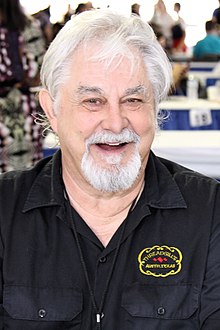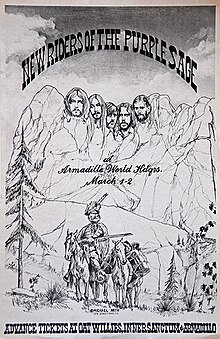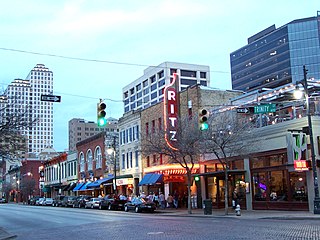
Austin's official motto is the "Live Music Capital of the World" due to the high volume of live music venues in the city. Austin is known internationally for the South by Southwest (SXSW) and the Austin City Limits (ACL) Music Festivals which feature eclectic international lineups. The greatest concentrations of music venues in Austin are around 6th Street, Central East Austin, the Red River Cultural District, the Warehouse District, the University of Texas, South Congress, and South Lamar.

Philip Wells Woods was an American jazz alto saxophonist, clarinetist, bandleader, and composer.
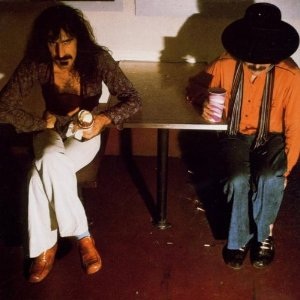
Bongo Fury is a collaborative album by American artists Frank Zappa and the Mothers, with Captain Beefheart, released in October 1975. The live portions were recorded on May 20 and 21, 1975, at the Armadillo World Headquarters in Austin, Texas. Tracks 5, 6 and 9 are studio tracks recorded in January 1975 during the sessions which produced One Size Fits All (1975) and much of Studio Tan (1978).

Greezy Wheels is an Austin, Texas-based progressive country band that formed in the 1970s. They played more frequently at the Armadillo World Headquarters than any other band in the history of the venue. They are regarded as the Armadillo house band and are elected members of the Austin Music Hall Of Fame.
William De White, better known as Guy Juke, is a Austin, Texas–based graphic artist and musician. As a poster artist he created memorable imagery for nightclubs such as Armadillo World Headquarters and was one of the 'Armadillo Art Squad'. His work is recognized for its blocky, sharp-edged figures on angular, geometric settings. Often darkly detailed, his work include shadowy and angular figures inspired by horror films, haunting western landscapes, and loopy cartoon characters.

The nine-banded armadillo, also known as the nine-banded long-nosed armadillo or common long-nosed armadillo, is a mammal found in North, Central, and South America, making it the most widespread of the armadillos. Its ancestors originated in South America, and remained there until the formation of the Isthmus of Panama allowed them to enter North America as part of the Great American Interchange. The nine-banded armadillo is a solitary, mainly nocturnal animal, found in many kinds of habitats, from mature and secondary rainforests to grassland and dry scrub. It is an insectivore, feeding chiefly on ants, termites, and other small invertebrates. The armadillo can jump 91–120 cm (3–4 ft) straight in the air if sufficiently frightened, making it a particular danger on roads. It is the state small mammal of Texas.
Shiva's Headband, was an American psychedelic rock band, formed in Austin, Texas, United States, in 1967. Original members included fiddler Spencer Perskin and his wife Susan, keyboardist Shawn Siegel, guitarists Kenny Parker and Bob Tom Reed and drummer Jerry Barnett. The group was the house band at the Vulcan Gas Company, a late 1960s Austin nightclub. The band is credited with a significant role in the founding of the Armadillo World Headquarters. The band's first royalty check opened the club and hired Eddie Wilson as manager. Shiva's Headband was also the first band to perform there. Throughout the 1960s and early 1970s, the band played with touring acts such as Spirit, Steppenwolf, ZZ Top, Janis Joplin, Canned Heat and Steve Miller. Austin psychedelic bands contemporary to Shiva's Headband included The 13th Floor Elevators and The Conqueroo.

Herschel "Tex" Evans was an American tenor saxophonist who was a member of the Count Basie Orchestra. He also worked with Lionel Hampton and Buck Clayton. He is also known for starting his cousin Joe McQueen's interest in the saxophone. Joe McQueen, living until 2019 at age 100, may well have been the last surviving person to have known Herschel during his lifetime.
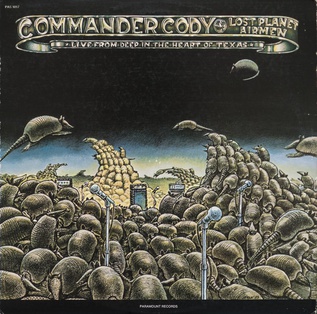
Live from Deep in the Heart of Texas is an album by American rock band Commander Cody and His Lost Planet Airmen. It was recorded live at the Armadillo World Headquarters in Austin, Texas in November 1973, and released in 1974. Unlike many live albums, it contains mostly new material and features only two previously released songs. It reached #105 on the Billboard 200 album sales chart.

Jim Franklin is an artist, illustrator, and underground cartoonist best known for his poster art created for the Armadillo World Headquarters, a former Austin, Texas, music hall. He is also known for his detailed, surrealistic illustrations of armadillos, making them an emblem of underground music.
Herbert Bickford "Herbie" Steward was an American jazz saxophonist. He was widely known for being one of the tenor saxophone players in Four Brothers, part of Woody Herman's Second Herd.

The Austin Museum of Popular Culture (AusPop) is a Texas 501(c)(3) nonprofit organisation dedicated to collecting, preserving, and exhibiting art and memorabilia that reflect Austin's eclectic contributions to popular culture worldwide.
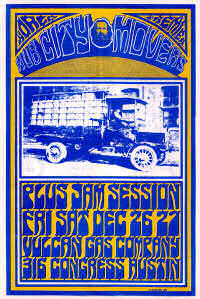
The original Vulcan Gas Company was the first successful psychedelic music venue in Austin, Texas. The Vulcan opened its doors at 316 Congress Avenue in the fall of 1967, and closed in the summer of 1970. Gary Scanlon, Houston White, Don Hyde, and Sandy Lockett started the VGC. By 1969, management was primarily by White and Lockett, along with Jim Franklin. There was a substantial sound system installed by Sandy Lockett. Charlie Sauer was the principal audio engineer for the last year of operation. Bobby Hedderman and Marty McDermott managed the club for the last few months. Underground cartoonist Gilbert Shelton became their art director in 1967 and drew their weekly posters.
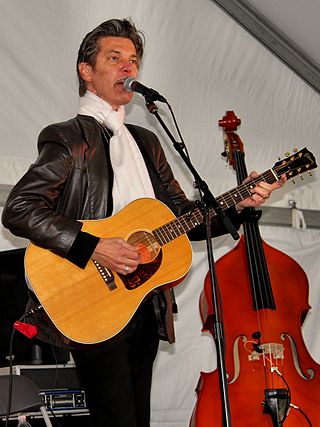
Jesse Sublett is a musician and writer from Austin, Texas. As a musician, he is best known for his long-running rock trio, The Skunks. His essays and journalism have appeared in a wide range of publications, and he is also known for his mystery novels featuring a bass-playing sleuth named Martin Fender.

Edwin Osbourne Wilson is a former concert promoter and co-founder and owner of the Armadillo World Headquarters (1973–1980). The music venue led a music movement in Austin to national prominence from 1973 to 1980 as the birthplace of Texas progressive country, aka "redneck rock" – a fusion of country music and rock – later, more blues than rock. It was a popular venue for Willie Nelson. Wilson is the owner of two Threadgill's restaurants in Austin. The original, which he purchased in the mid–1970s from John Kenneth Threadgill (1909–1987), was where Janis Joplin got her start.
The Folk Music Club was an organization founded in 1963 at the University of North Texas that attracted student musicians, several of whom went on with other performing artist to define a Texas music and cultural movement in Austin that grew to national prominence and left a legacy that endures today. Its student members included Spencer Perskin, Steven Fromholz, Ray Wylie Hubbard, Michael Martin Murphey, and Eddie Wilson.
Kenneth Threadgill was an American country singer and tavern owner, who mentored the early Austin folk music scene that included Janis Joplin. He also lent his name to two nationally famous restaurant/bar venues.
Micael Priest was an American artist and raconteur. Due to Priest's color-blindness, his primary medium was pen and ink, which he put to great use in inexpensively printed, highly graphic, rock posters. Often printed in single color or split-fountain reliefs, the posters were done mostly for Armadillo World Headquarters, a music hall in Austin, Texas that operated from August 7, 1970 to December 31, 1980.
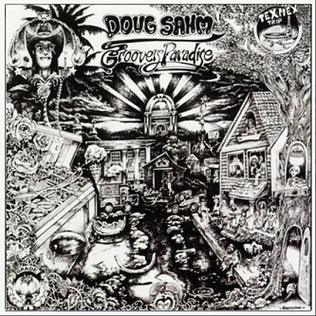
Groover's Paradise is an album by Doug Sahm, produced by musician Doug Clifford and released on Warner Records in 1974. Following his return to Texas after his success with the Sir Douglas Quintet in California, Sahm settled in Austin, Texas. As the local music scene thrived, he was featured as the main attraction in local clubs and he recorded his debut album for Atlantic Records.

